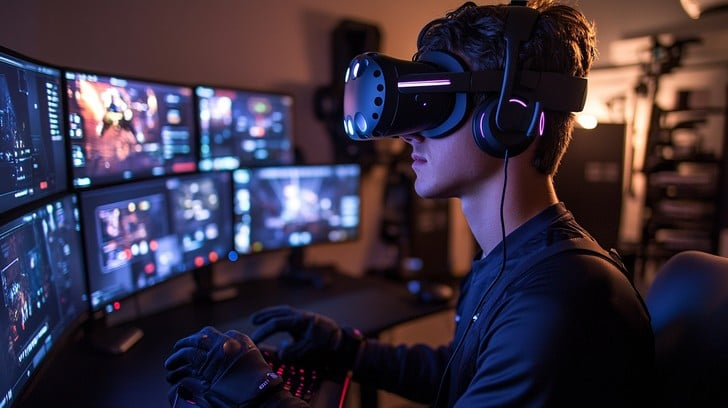How Player-Generated Content Drives Engagement in Modern Games
Player creativity has become one of the forces shaping the modern gaming landscape. From building custom maps to designing entirely new worlds, players are no longer just participants but also creators.
By Tim Uhlott|Last updated: October 13, 2025|8 minutes read
game development

Player-generated content (PGC), also known as user-generated content (UGC), has become one of the most powerful engines of engagement in modern game design. From Minecraft mods to Fortnite creative maps, players create, share, and remix content, keeping communities active long after launch.
This article explores why PGC works, how studios implement it, and what developers can learn from the most successful examples.
Recognition fuels motivation and turns your most passionate fans into long-term ambassadors. Roblox’s developer program and Fortnite’s Creator Economy 2.0 give top builders real financial incentives.
Effective moderation tools, clear community guidelines, and safe reporting mechanisms protect both your brand and your players.
What Is Player-Generated Content?
Player-generated content refers to any material created by players rather than the original game developers. This can include a wide range of creative outputs such as custom levels, maps, and missions, character skins or outfits, gameplay mods, fan art, screenshots, machinima videos, or even entire user-created worlds and game modes. These contributions can exist within the game itself or as external creations that enrich the community around it. User-generated content transforms players from passive consumers into active co-creators. Instead of merely playing through a predefined experience, players participate in shaping the game’s evolution, adding their personal creativity and vision to its universe. This collaborative relationship between developers and players creates deeper engagement and turns games into living ecosystems that continue to grow long after their official release. Through PGC, players not only express themselves but also become an essential part of the game’s ongoing story and identity.Why Player-Generated Content Boosts Engagement
1. It Extends the Game’s Lifespan
Games with active creation tools like Roblox or Skyrim stay relevant for years. Each new mod, skin, or map acts like a “mini update,” injecting new life into the ecosystem without developer intervention. Example: Skyrim launched in 2011, but its vibrant modding community still releases new quests, textures, and mechanics in 2025. The result is continuous engagement and recurring revenue from re-releases.2. It Builds Strong Communities
Creating content leads to collaboration. Players exchange ideas, give feedback, and form niche subcultures within the larger community. When players feel ownership over the world, they stick around not just for the gameplay, but for the people they’ve connected with.3. It Generates Free Marketing
Every time a player streams a custom map, posts a mod showcase, or shares screenshots, they amplify the game’s visibility. This organic, authentic marketing is far more powerful than paid ads since it comes from passionate fans rather than corporate voices.4. It Encourages Emotional Investment
When players pour hours into creating something, they form an emotional bond with the game. Their identity becomes linked to their creations, which increases loyalty and decreases churn. Players who design their own Fortnite Creative maps or Mario Maker levels don’t just play but also own a part of the experience.5. It Sparks Innovation Developers Can Learn From
Player-generated content has consistently been a ground for innovation, offering developers a glimpse into the creative instincts of their communities. Some of the most influential games in history were born from player experimentation rather than studio planning. Dota 2, for example, began as a community-made mod for Warcraft III that redefined the real-time strategy genre and gave rise to the global phenomenon of multiplayer online battle arenas (MOBAs). Counter-Strike, one of the most iconic first-person shooters, evolved from a fan-created mod for Half-Life. These success stories highlight how community-driven creativity often anticipates shifts in player preferences long before major studios recognize them. By paying attention to what players build, modify, and share, developers can identify emerging trends, test new gameplay mechanics, and refine ideas with minimal risk. In many ways, the community acts as an experimental laboratory, pushing boundaries that inspire professional developers to evolve their own design philosophies and, sometimes, to discover the next big genre in gaming.How Developers Can Enable Player-Generated Content
1. Provide Accessible Creation Tools
Players need user-friendly editors, level creators, or APIs. The more intuitive the tools, the more diverse your creator base becomes.2. Build Sharing Systems Into the Game
Don’t make players leave your ecosystem to share. In-game galleries, map browsers, and “featured creator” sections make it easy to discover and celebrate community creations.3. Reward and Recognize Creators
Highlight top creators through in-game features, competitions, or even revenue-sharing.Recognition fuels motivation and turns your most passionate fans into long-term ambassadors. Roblox’s developer program and Fortnite’s Creator Economy 2.0 give top builders real financial incentives.
4. Moderate and Protect the Ecosystem
Open creation brings risks of inappropriate content, IP violations, or toxicity.Effective moderation tools, clear community guidelines, and safe reporting mechanisms protect both your brand and your players.